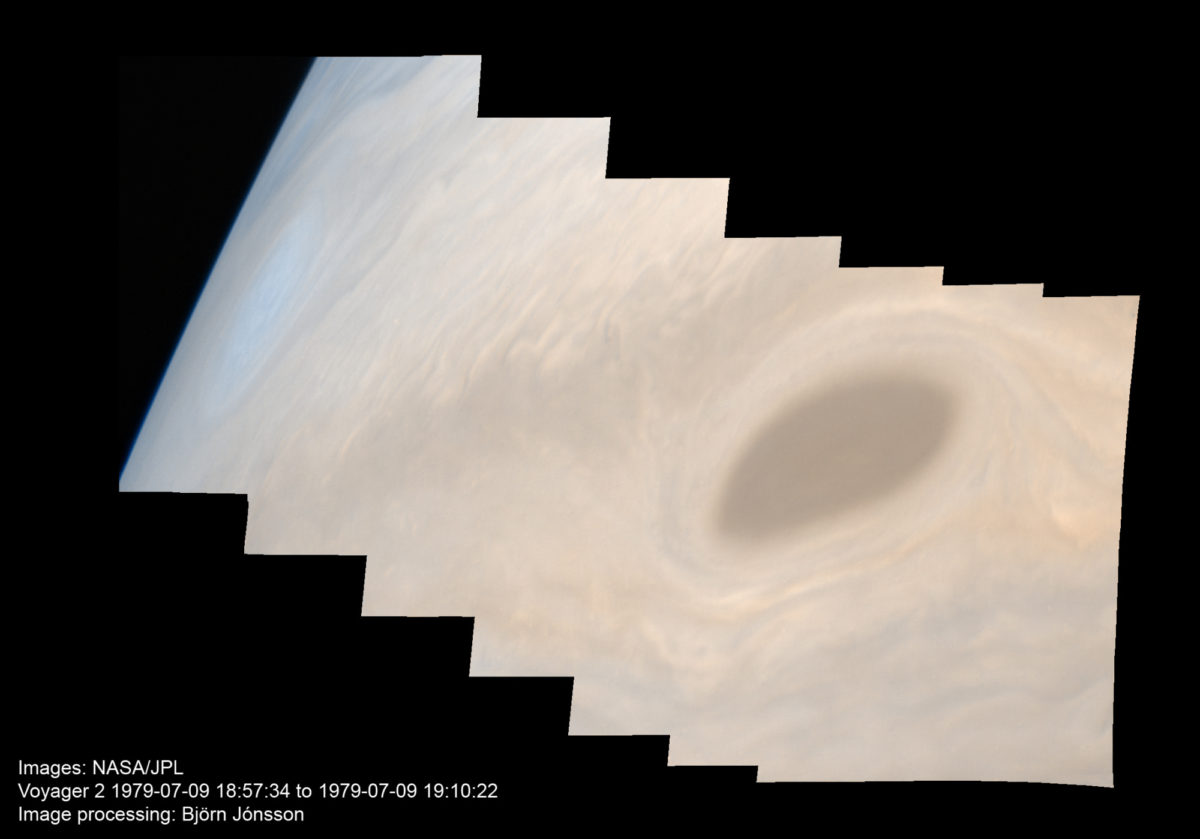Björn Jónsson • Sep 14, 2016
A deep dive into the highest-resolution Voyager Jupiter data
A few weeks before the first Juno high-resolution imaging, I decided to take a look at Voyager color images at various resolutions, with particular attention to high-resolution mosaics. The idea was to get at least some idea of what might be expected from Juno. This resulted in several mosaics, which I will show in order of their resolution, starting with the lowest resolution mosaic.
With the exception of one mosaic (the white oval mosaic), the source images are in all cases green- and violet-filtered images. Most of the hi-res Voyager color observations were performed using this filter combination. This is not optimal for constructing true-color images, but I think I managed to get reasonably realistic color. Here is a quick and dirty global image I used as a test -- the two source images are orange and violet filtered.

Not bad, but I suspect the color could be improved a bit. The color processing I used for the hi-res mosaics is comparable to what I did in this global view. The features shown in the mosaics are semi-randomly selected -- I simply selected images where mosaics could be constructed, color was available and the images looked interesting in some way.
I processed the color of each mosaic in two ways, making one version with approximately true color/contrast version and another where the color and contrast has been exaggerated and the image sharpened to better show various details. Some of the images below are shown in both versions; for both versions of all images, visit this forum thread. The contrast stretch varies for the different mosaics and depends on things like scene brightness and contrast. North is up in all cases. The mosaics are 10-15% bigger than the original data, i.e. they are slightly oversampled to avoid losing details. In all cases the indicated resolution applies to the original data. As usual I reprojected the images to simple cylindrical projection, did all of the mosaicking and color processing there and then rendered an image using the viewing geometry close to the mid-time of the mosaic's imaging sequence.






Farther south, the south polar hood/haze is obvious. Its northern edge is usually near 66°S. It is bluish in the enhanced image here, both due to the stronger blue color (relative to red/green) in the polar hood and also because of Rayleigh scattering near the limb. Observations have shown that the top of the main cloud layer is lower in the polar regions than elsewhere.
When Voyager 1 obtained these images it was less than 1 degree south of Jupiter's equatorial plane, while the oval is located near latitude 60°S. This makes the oval highly foreshortened; in reality it is much closer to a circular shape than the images above suggest. These images were acquired at a distance of ~930,000 kilometers from Jupiter's center at a resolution of ~9 km/pixel. Color, contrast, and sharpness have been enhanced to better show various details.Image: NASA / JPL-Caltech / Björn Jónsson





Support our core enterprises
Your support powers our mission to explore worlds, find life, and defend Earth. You make all the difference when you make a gift. Give today!
Donate

 Explore Worlds
Explore Worlds Find Life
Find Life Defend Earth
Defend Earth




